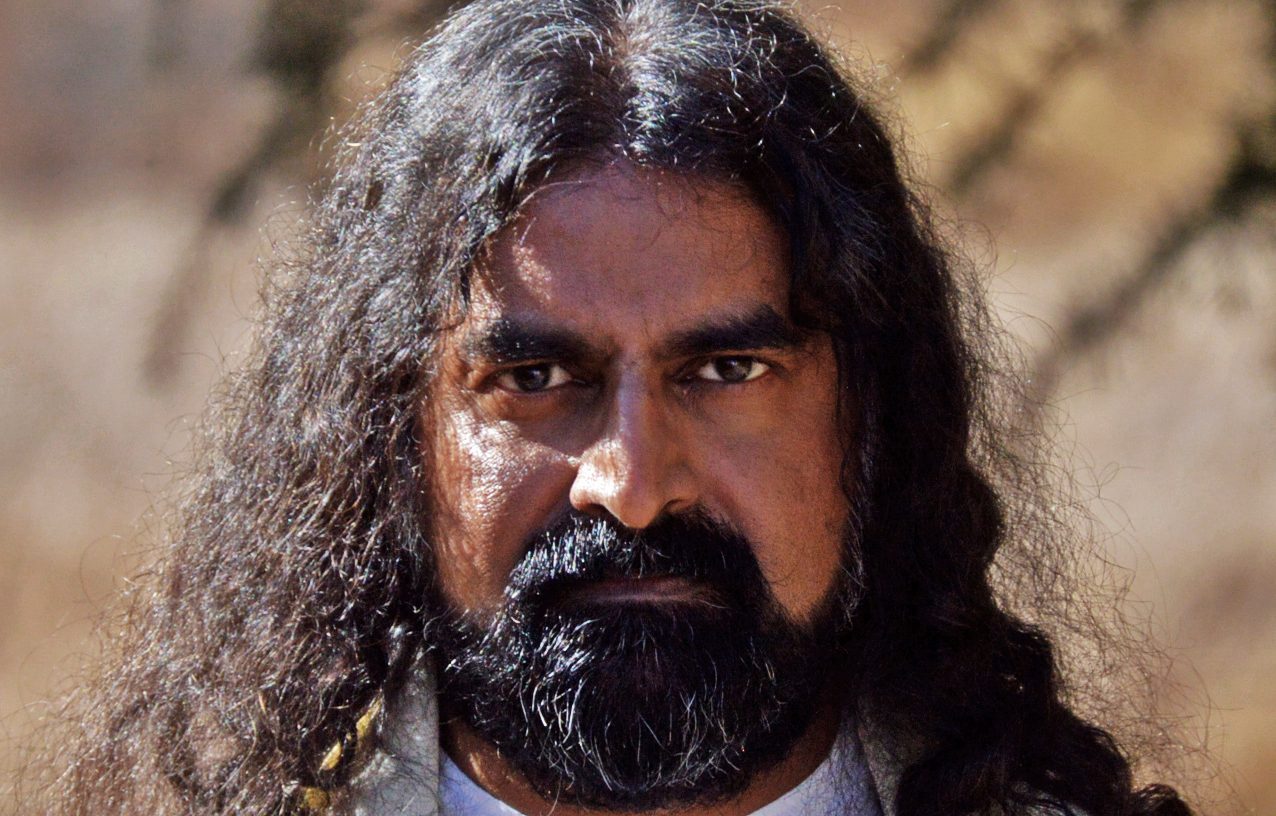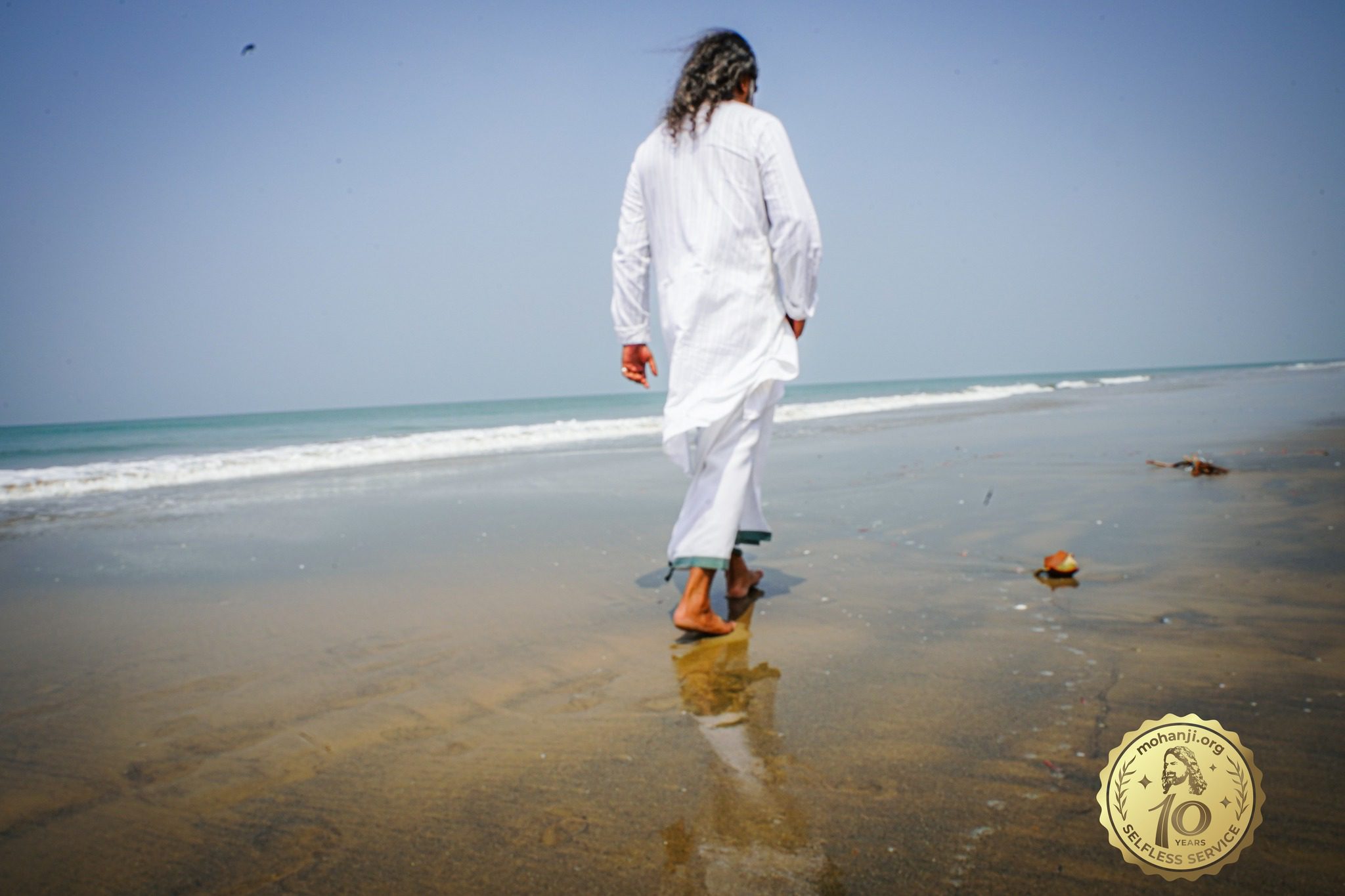The interview with Mohanji in New York, on ITV in the programme “Wide Angle”, part 2
[youtube https://www.youtube.com/watch?v=_eI-qyx7mIc?rel=0&controls=0&showinfo=0]
Ashok Vyas: Namaskaar. It is difficult to comprehend the experiences which have been a part of the fabric of Mohanji’s life – staying 5-6 days in each continent, on the move always, traveling all across the world through places like the Vasishta cave, the Himalayas, meeting spiritual beings, doing sincere explorations and experiments. And as he mentioned, it is ultimately You who is your own guru. Most people however are lazy in making such attempts at inner exploration and their curiosity provokes questions. For instance, recently someone, feeling that your eyes were shaivic, asked: “Are you Shiva?” And you said – “Yes, I am Shiva” Was your reply in full seriousness or was this a spur-of-the-moment response?
Mohanji: (smiling) Yes, I am actually Shiva and you are Shiva as well, the only difference may be your lack of awareness.
You have the choice to be either “shava” (totally unconscious) or “Shiva” (fully conscious). Shiva is according to me, not an individual but a state – the state of being so fully conscious and so fully aware, that not even a drop of blood passes through your veins without your awareness of it.
Not just your words or activities, but your presence itself must be transforming. You can teach anything but if your presence is not transforming, it is not worth it. There are many powerful saints sitting in the Himalayas who do not come out in the open, since they want to be away from distractions, contamination etc. But there is also no division amongst them – they will never tell you not to go to this or that saint, or not to follow this or that – but only to aim for the highest attainable (even Kailash if you can), and never stop anywhere in the middle.
So when I said that I was Shiva, I meant it. Why not? Do you know, you are the same as well – are you aware of it? If you are not, become aware of it – not in an intellectual way but experientially. Be an experiential spiritualist, not a theoretical one. Theory is very easy, and too much of knowledge makes your brain obese. (laughter) Intellectual obesity is more difficult to handle than physical obesity.
A: ‘Kailash with Mohanji’ is another book, a travelogue compiled by those who traveled with Mohanji to Kailash.
M: It is not a book authored by me but one compiled and published by fellow travelers, who shared experiences of their personal quests on this journey. Kailash is not easy. Dolma pass is at an altitude of about 19,000 ft with 30% oxygen and it’s a real ordeal. We went last year (2014) via Kathmandu.
A: Mohanji, you are immersed in such bliss, then why do you come back and interact with people, sitting here in this studio in New York? When you are in your travels in a hundred countries, do the low consciousness levels of people and their level of questioning bother you? Why did you make this choice? Also, how has your experience with siddhis been?
M: Siddhis are spontaneous – just like when you become a CEO and all associated perks come to you without any negotiations. When you evolve spiritually, siddhis just happen, but the trap is that sometimes one can get too fascinated with the siddhis. A small example – I might like to know what you, Ashok, are going to do in the next hour after I leave the studio. I could use my power or siddhi to divine that, but it can become a trap for me in the future. Hence it is important to completely ignore all siddhis until you become one with God. This is what sage Patanjali says as well – whenever a siddhi happens, leave it and move on. In my communions with Babaji, I was told about this trap and started ignoring siddhis from that time on.
I started teaching the meditation(s) in 2008, first in Dubai. It spread around the world by itself – I did not do anything specific for it. The meditation has been translated into many languages, by people of their own accord when they experienced transformation – and not at my bidding. We never canvas people. When people come by themselves, they are really sent by masters. If you canvas, then people show up just out of curiosity, and receive nothing. If someone comes with a full cup, what can you give? The strength of a seeker is their emptiness. Only when someone comes to you with an empty glass can you fill it up! And that is happening – a lot of people are coming- genuine seekers wanting to take the next step and evolve.

In the path of Shiva, the Nath tradition, there is no ritual, not even a meditation. What meditation was Shirdi Sai Baba teaching? The Master delivers everything, provided the disciple is eligible. The eligibility is emptiness. All you need to do is keep the inner space clean- through thought, word, action, non-violence and selflessness. I only speak of two things: purity and faith. Keep the inner space pure through continuous observation, witness-hood, selfless action and nonviolence in thought, word and action. Then the space stays clean; the rest is the Guru’s job.
AV: Ego obstructs our growth too. To overcome ego, one way is seva. Mohanji Foundation is active in various parts of the world. Share with us how this foundation came into being. Does your background as general manager help the organization in the seva activities?
M: I believe that everyone has great potential. So in most countries, for instance in the USA where ACT foundation is registered, people come together, express their deepest qualities and take things forward. The service or seva work first started with Ammucare, formed in India in 2003, with several activities including the distribution of blankets during winters when many people die from cold. This work has been happening every year in eighteen cities like Delhi, Gurgaon, Haridwar and regions of Jammu, Punjab and Uttarakhand.
Initially, we used to announce that blankets were available for distribution, and people would line up to receive them. But these days in order to make sure blankets actually reach the needy and eligible, we have five or six students drive out into the night, to railway stations and streets, to find the needy and cover them with blankets. So we look for practical and realistic solutions. In South Africa, we are currently propagating vibrionics, a treatment based on the vibration of the body, that is effective and offered free of cost. We empower people- those of lower socioeconomic status- by training them to administer medicines. In the US, programs serve food to the homeless, in the UK there is Food Seva, and food is also being sent to the homeless and itinerants in the Balkan states.
Ammucare has been working in Uttarakhand, especially in the aftermath of the flash floods and extensive destruction there. I happened to be present during that time: we were in Joshimath on the way to Badrinath. Rain was heavy, and traveling on road, we watched a huge boulder roll down the mountain. I casually observed that the water current must easily have been 300 hp in power. It did turn out that it was the result of a cloudburst, and the sheer force had washed away a 100m road from Govindghat. I had an invitation to visit ITBP (Indo-Tibetan Border Police) camp because a person practicing our meditations had requested me to bless those soldiers if we were to pass that way. After entering the camp and having food, people informed us that we could not travel further – the road was gone. “Could we then go south and turn back,” we asked, and they said no, there had been 500 landslides that way. So we were stranded for five days in that camp. And though we hadn’t carried sufficient cash, we bought food to serve the refugees with whatever we had. Many rescued people were coming in, even at 8000 ft altitude. Kedarnath is at 12000 ft where everything had been washed away – only the temple remained. The casualty statistics were unavailable since no logs are kept about movement of people in that heavy traffic. There were at least 4000 registered horses and horsemen in Kedarnath alone, what about them – they must have all gone. This is just to give you an idea of the size of the devastation. People rescued from Govindghat were streaming into Joshi Math area; many of them had lost all their relatives, vehicles and belongings. We were able to serve food to them at least a few times with our limited resources. Getting hold of money was a challenge because of the blocked roads. Only when the roads became reasonably open, were we able to come down. I was asked if I wanted to go by helicopter but I refused requesting that the old and sick be sent first, followed by women and children. They had marked me as a VIP because they knew me, but I told them that my preference was to stay and let the others go instead. The sorties were happening with the helicopters carrying people.
We came down to Haridwar and Rishikesh later on, where a few people told me that all aid efforts were being directed to tourist areas where the roads were refurbished. But the villages did not receive any aid. So Ammucare is now focusing on the villages and we are adopting them since nothing reached there. One mail from our crew recently mentioned that the villages could not be entered because of the stench of rotting corpses. Our efforts are focused on adopting villages, and taking care of necessities. Three truckloads have gone from Delhi – our boys and girls are doing a lot of work there.
AV: When you sit in meditation, do you talk to higher beings to find out why it is that people who are apparently so innocent, are taken away?
M: Everything is related to the path of destiny, but that is easily said. First, the irreverence, second the insensitive government. If you go the Himalayas today (and I have been visiting there almost every year since 2000), you will see a lot of rafting /camping type of activities. Earlier it was a sacred place known as the Valley of Gods, but today it is a valley of tourists. There is no bhaav, feeling, surrender or devotion. It is just a picnicking spot with people shouting and screaming.
God doesn’t need anything from anybody. No true master needs anything from anybody, they are self-sufficient. Are you after sensations or are you after God? If you are after God, you go to these places for being in oneness with God. What you experience is shanthi – silence within. God is in silence. If you shout and scream and elbow others in activity mode, are you going to get silence at all? The bhaav feeling is negligible these days.

Secondly, if those in charge of governing are looking to preserve the area, they definitely need to do much, much more. Or are they, in more likelihood, looking for profits? Sixteen new dams are coming up in the Himalayan belt, which being a geologically younger and hence taller mountain range, breaks more easily with consolidation of water mass. The dams are the reason why you see many more landslides happening today.
In contrast, in the USA there is awareness and emphasis on environmental conservation. The flash floods wiped away all campsites off Vasishta cave. Around 1956, the Ganga had risen up close to the cave’s edge but had not entered inside. The Ganga acted furiously now and after 60 years, actually entered the Vasishta cave and deposited mud inside. Swami Chaitanyananda, an 82-year old saint living there, told me he had never seen such devastation ever in his lifetime. The room where we stayed had 7 feet of mud deposition, so you can imagine how much the Ganga must have risen in two days. It’s nature fighting back, but many people suffered in the bargain, my estimate being 20-50,000 deaths. Statistics are not available, so we have to estimate on the basis of available numbers of pilgrims and those reported missing. And this number does not even account for the villages.
What if we had gone to Govindghat instead of Badrinath, where most of the devastation happened? Why did we halt at ITVP in Joshimath? While travelling, passengers in the car saw a boulder coming down the hillside. I told them not to talk to the driver and asked him to keep driving – the boulder passed down behind our car. If it had hit us, we would have all perished for sure. Those with deep faith and surrender are rescued. It’s a clear sign that divinity works in its own way. It’s all grace – grace is available, provided you are eligible or able to create eligibility. Eligibility is simple surrender or deep bhakti, sincere, not transactional. Most bhakti these days is transactional- going to the temple has become like going to the supermarket and this does not interest God in the least. Lord Krishna said – if you offer just a leaf or a flower to me, I will be happy, but remember, even that belongs to me anyway (smile).
AV : In order to connect to the Omnipresent, we in turn need someone connected to it, and a purity of mind, with deep longing, love or intensity. Words fail to picture that moment when a person becomes one with that One. The way that Oneness manifests in Mohanji is amazing and inspiring, turning disbelievers into believers – and really, into belief in themselves. Mohanji says your guru is within you and becomes available when you surrender. To conclude this conversation, I would like to again mention the two books “Power of Purity” and “Journey to Kailash”. In addition, mohanji.org has free downloadable guided meditations available as well as other information.
A final question, we hear that japa is important and that some scriptures may also help in streamlining our minds to the right rhythm.
M: These days, pace of life is much faster than say 20-30 years ago, when people had more space and time. Time seems to fly – days into nights and months gone seemingly in a flash. In today’s pace, sitting down and meditating is sometimes difficult, unless it becomes your inherent nature. When manana turns into dhyana, you find yourself already in meditation. So it is important to understand and to feel who you are. A guru may guide you to Tat Tvam Asi (You are that). But it is up to you to put efforts to realise that.
Transcribed by Geeta Iyer
Proof-read by Aviral Srivastava


1 thought on “Interview with Mohanji in “Wide Angle”, part 2”
Thank you for posting this enlightening satsang.
Jai Mohanji